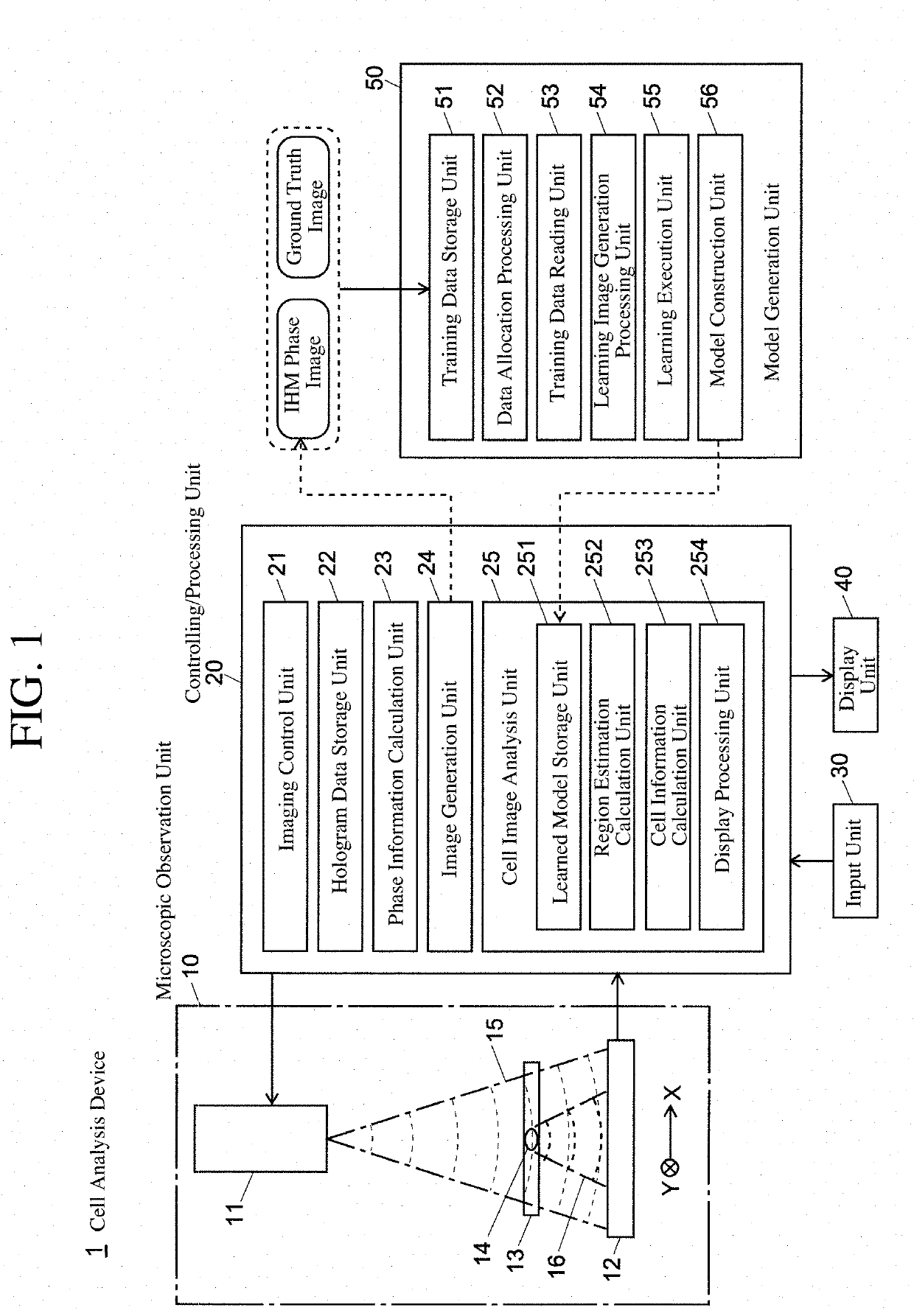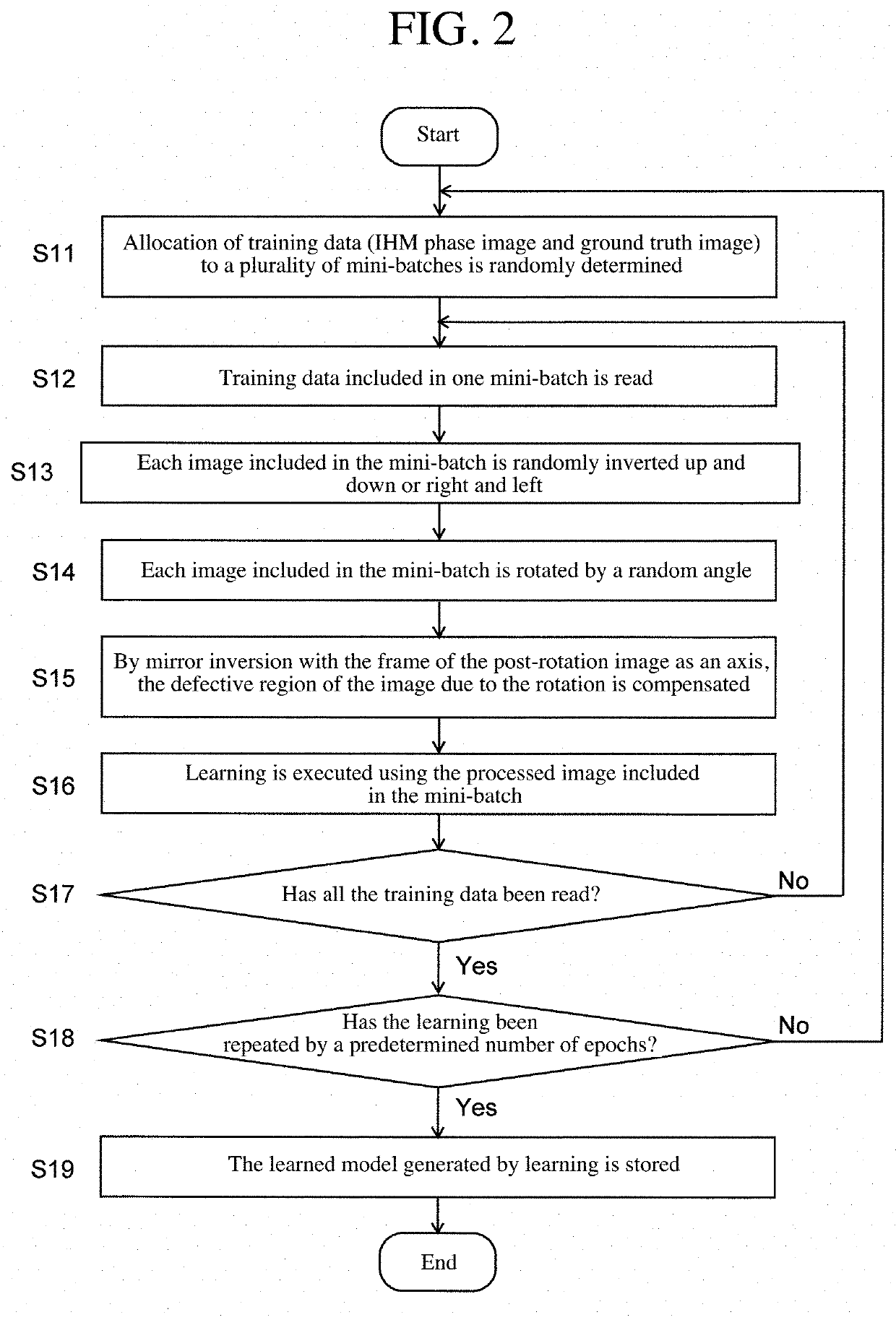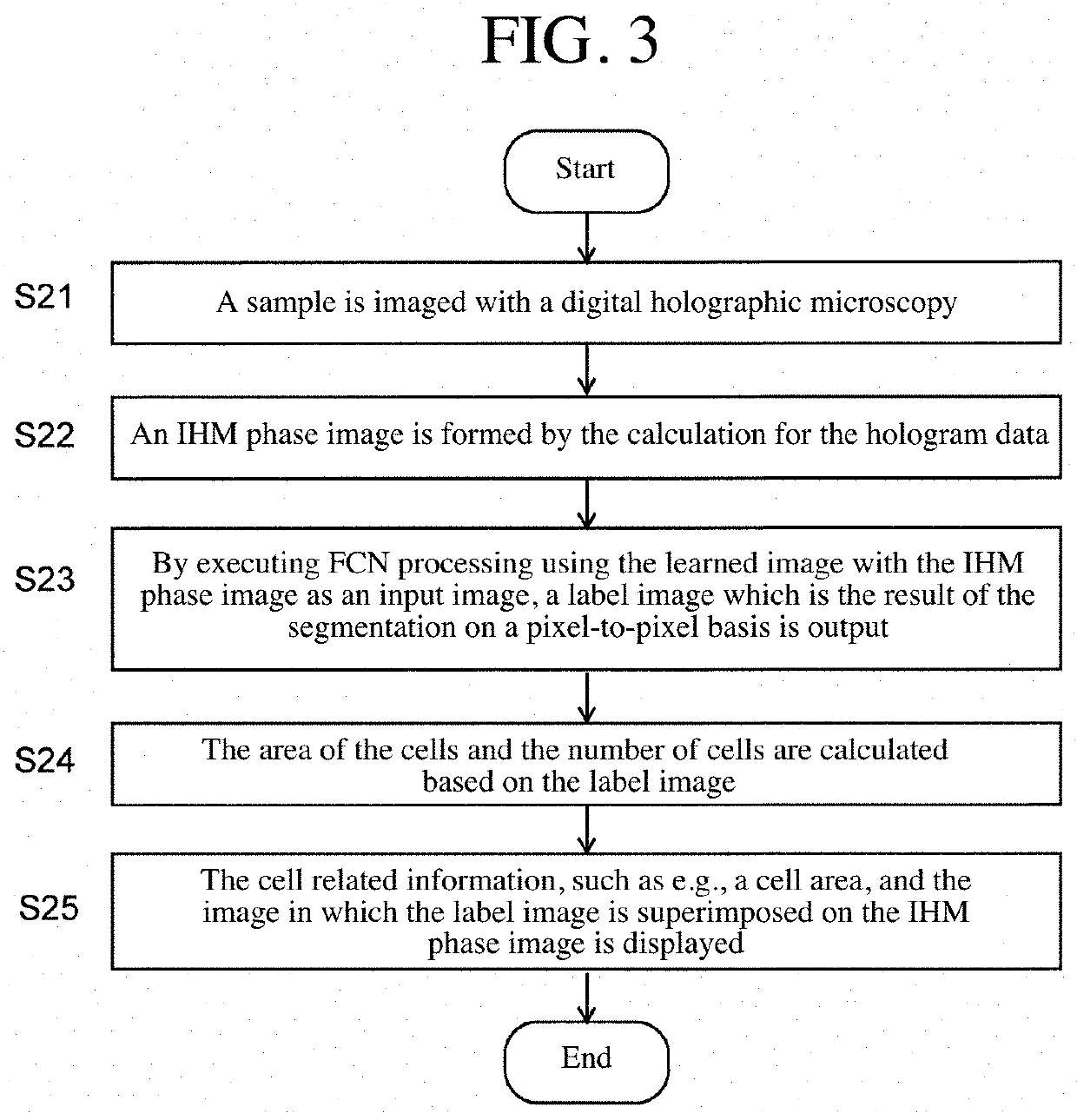Cellular image analysis method, cellular image analysis device, and learning model creation method
- Summary
- Abstract
- Description
- Claims
- Application Information
AI Technical Summary
Benefits of technology
Problems solved by technology
Method used
Image
Examples
Embodiment Construction
"d_n">[0057]Hereinafter, an example of a cell image analysis method and a cell image analysis device according to the present invention will be described with reference to the attached drawings.
[0058]FIG. 1 is a schematic configuration diagram of a cell analysis device using a cell image analysis device for carrying out a cell image analysis method according to the present invention.
[0059]The cell analysis device 1 of this example is provided with a microscopic observation unit 10, a controlling / processing unit 20, an input unit 30 and a display unit 40 as user interfaces, and a model generation unit 50.
[0060]The microscopic observation unit 10 is an in-line holographic microscopy (IHM), and is provided with a light source unit 11 including a laser diode, etc., and an image sensor 12. A culture plate 13 including a cell colony (or cell alone) 14 is arranged between the light source unit 11 and the image sensor 12.
[0061]The controlling / processing unit 20 controls the operation of the...
PUM
 Login to View More
Login to View More Abstract
Description
Claims
Application Information
 Login to View More
Login to View More - R&D
- Intellectual Property
- Life Sciences
- Materials
- Tech Scout
- Unparalleled Data Quality
- Higher Quality Content
- 60% Fewer Hallucinations
Browse by: Latest US Patents, China's latest patents, Technical Efficacy Thesaurus, Application Domain, Technology Topic, Popular Technical Reports.
© 2025 PatSnap. All rights reserved.Legal|Privacy policy|Modern Slavery Act Transparency Statement|Sitemap|About US| Contact US: help@patsnap.com



